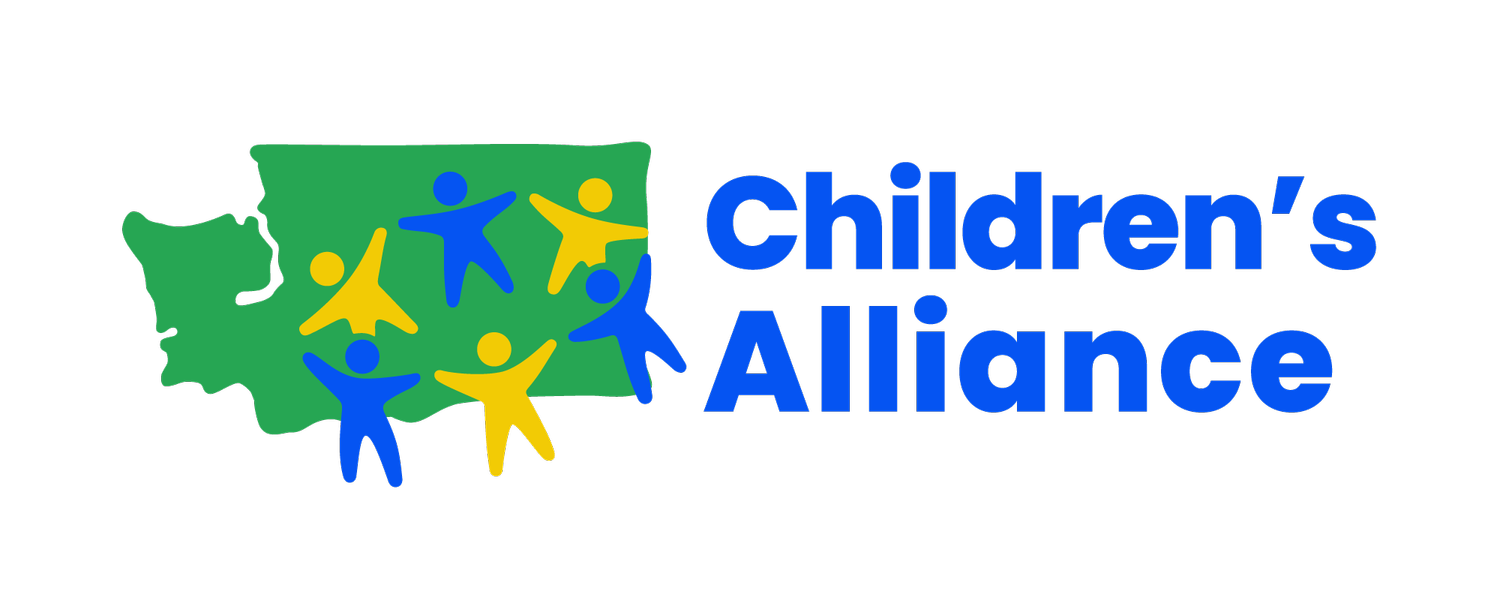1 IN 6 WASHINGTON FAMILIES RELY ON FINANCIAL ASSISTANCE FOR GROCERIES
Understanding the "Households with Children Participating in the Basic Food Program in Washington" Indicator: To drive meaningful change for kids and families, we rely on data indicators—specific, measurable pieces of information that show how children are doing across key areas like health, education, and economic stability. One foundational indicator in our KIDS COUNT® data project is the percentage of households with children under 18 years old that received support from Washington state’s Basic Food program in the last 12 months. Basic Food is Washington state’s name for the federal Supplemental Nutrition Assistance Program (SNAP). Sometimes referred to as “food stamps,” Basic Food provides food and nutrition support to individuals and families who meet income guidelines. Eligible households receive a monthly allotment onto an electronic benefits card, which can be used to buy groceries at participating stores. Understanding the share of Washington households with children receiving Basic Food helps advocates and policymakers understand the extent of food insecurity in our state and can guide efforts to develop policies that more effectively support families’ access to food.
Click here to explore the data.
Overview
Many programs designed to support households with low incomes use similar eligibility guidelines, often based on household income in relation to the Federal Poverty Guidelines (FPG) or the Federal Poverty Level (FPL). For example, in Washington, Basic Food is available to households with gross incomes at or below 200% of the FPL. At that level, 16.4% of Washington households with children receive Basic Food support. For comparison, a single adult (age 19-64) looking to enroll in Apple Health, Washington’s Medicaid program, must have an income of no more than $1,800 per month, or about 138% of the FPL.
Although not a comprehensive measure, eligibility thresholds like these offer a way to estimate how many households may qualify for income-based programs in our state. Eligibility for Basic Food often suggests that a household likely qualifies for other support as well, such as free or reduced-price school meals, subsidized health and child care, and certain tax credits.
County-level data reveals that areas with higher Basic Food enrollment often also have higher rates of children living in poverty, as seen in counties like Ferry and Yakima (see Table 1 below). While lower income is a clear factor influencing the need for food assistance, this overlap also reflects broader cost-of-living pressures—especially in rural communities. A 2023 analysis found that rural households may face rising living costs more rapidly than urban residents, due to factors like higher food prices, longer travel distances to grocery stores and medical care, and limited access to services. Addressing hunger in Washington will require solutions that reflect the unique economic pressures experienced by under-resourced rural communities.
Table 1. The three counties with the highest and the lowest percentages of households with children under 18 participating in Basic Food
Past Work:
Children’s Alliance has supported many initiatives to promote access to healthy and affordable food for kids across Washington state. Most recently, in 2024, we supported the rollout of “Sun Bucks” or Summer EBT, which provided eligible families with cash assistance during the summer when free and reduced-price school meals were unavailable. Maintaining consistent food support throughout the year helps promote family stability and removes a key barrier to children’s well-being.
Percentage of households with children under 18 participating in Basic Food by County in Washington state
Ongoing Work:
Children’s Alliance has long supported efforts to expand access to free school meals to help ease financial pressure on families and support children’s health and well-being. The passage of House Bill 1238 in 2023 was a major success in improving nutrition access for kids. The bill requires school districts to provide free meals to all students at elementary schools where at least 30% of kids are eligible for free or reduced-price meals. However, the program is currently school-dependent and only 232 schools are eligible, accounting for just over 10% of schools in Washington. Unfortunately, because availability depends on individual schools, a student may lose access to meals when transferring schools (even within the same district).
Children’s Alliance continues to advocate for universal access to free school meals. Free school meals for all students would ensure that all children receive consistent access to nutrition, reduce administrative barriers like the current benefits cliff, and support students’ ability to focus, participate, and succeed in the classroom—things that are impossible when students are hungry.
In response to deep federal cuts, we are currently working with community partners to protect existing SNAP/Basic Food benefits in Washington. A sweeping federal budget reconciliation package known as the “One Big Beautiful Bill Act” shifts hundreds of millions of dollars in new benefit and administrative costs to the states each year. Most states cannot absorb these costs, and Washington stands to face particularly devastating impacts.
During the 2025 legislative session, lawmakers worked to balance a budget addressing a projected $16 billion shortfall. Now, the latest forecast from the Washington State Economic and Revenue Forecast Council adds to that challenge, projecting state revenue to be $720 million lower over the next four years than previously expected, further widening the budget gap. Governor Ferguson has made it clear that, as a result of funding cuts in the “One Big Beautiful Bill Act,” every Washingtonian currently receiving Basic Food will see a reduction in benefits, with a family of four losing about $127 per month. The new work requirements could also disqualify over 130,000 residents. Ferguson warned these changes will strain both household budgets and the broader state economy.
Children’s Alliance remains committed to protecting food access, supporting impacted communities, and urging lawmakers to prioritize nutrition assistance in the face of these harmful federal policies.
---
You can find county-level data here.
KIDS COUNT® is a registered trademark of The Annie E. Casey Foundation., Inc., and is used with permission of the Foundation.


